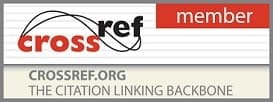
2021, Vol. 4, Issue 2, Part B
An experimental study to assess the effectiveness of sitz bath in reduction of episiotomy pain among the postnatal mothers in selected hospital of Kasganj, UP
Sandhya Kushwah, Neha Rajpoot and Mukesh Kumar
Background: Episiotomy is a common surgical procedure performed during second stage of labour to enlarge the vaginal introits and facilitate delivery. Although episiotomy aids in safe delivery of the child, the discomfort of episiotomy is an added concern in the already over stressed situation of puerperium. Episiotomy pain often interferes with even basic daily activities of the postnatal mother. Considering the high rates of episiotomy, following vaginal deliveries, we need to offer patients treatment alternatives for perineal pain, based on scientific evidence.
Objectives: To assess the intensity of episiotomy pain before and after sitz bath among postnatal mothers. To assess the effectiveness of sitz bath on episiotomy pain among the postnatal mothers. To find out the association between effectiveness of sitz bath on episiotomy pain and selected demographic variables.
Method: A quasi-experimental (one-group pretest and posttest) design was used for this study. The sample size consisted of 30 postnatal mothers who had normal delivery with episiotomy. Purposive sampling technique was used to select the samples. Data was collected by using numerical pain scale for assessing episiotomy pain. Intervention (sitz bath) administered for 15-20 minutes, and continued for two days both morning and evening.
Data was analyzed using descriptive and inferential statistics.
Result: In this study, Age wise distribution of samples shows out of 30 majority of samples 17(56.67%) lie in the age group of 24 to 29 years, 10(33.33%) samples lie in the age group of 18 to 23 years, 3(10%) samples lie in the age group of 30 to 35 years and no one sample lies in the age group of more than 35 years of age. Parity wise distribution of the samples shows, that majority of the samples 20(66.67%) were primi mothers and 10(33.3%) of the samples were multiparous mothers in the study. According to the place of residence, majority 19(63.33%) samples were living in rural area and 11 (36.67%) were living in urban area. According to Education, majority of the samples 13(43.33%) were graduate, 12(40%) were higher secondary, 5(16.67%) were high school and no one was illiterate. Nutritional status wise distribution of samples shows that, out of 30 majority 22(73.33%) of them were well nourished, 4 (13.33%) were mal nourished and 4(13.33%) were over nourished. Nature of delivery wise distribution of samples shows, that majority of samples 23(76.67%) had normal vaginal delivery and 7(23.33%) had instrumental delivery. According to the indication of episiotomy, majority 25(83.33%) had rigid perineum, 5(15.67%) had Macrosomia and no one had breech presentation. The effectiveness of the sitz bath therapy is checked by‘t- value’. The mean score of pretest is 5.367, the mean percentage of the pretest score is 53.67 and standard deviation of the pretest is 1.88. The mean score of the post test is 4.433, the mean percentage of the post test score is 44.33 and standard deviation is 1.77. The mean difference between pretest and post test score is 0.934. The mean percentage difference of the pre and post test score is 9.34. After application of T-test, the T calculated value is 11.7475. I also calculated the degree of freedom (DF) which is 29. Checked T- table value at the level of 0.05% of significance is 2.045, which is less than T calculated value. So, the result shows that the sitz bath therapy was effective on episiotomy wound pain reduction among postnatal mothers. There is a significant difference between pre and post test score of the pain level. There is significant association between the post test and demographic variables (age and parity). And there is no significant association between the posttest and other demographic variables like (place of residence, educational qualification, nutritional status, nature of delivery and indication of episiotomy) at 0.05 level of significance.
Pages : 74-78 | 1403 Views | 687 Downloads

How to cite this article:
Sandhya Kushwah, Neha Rajpoot, Mukesh Kumar. An experimental study to assess the effectiveness of sitz bath in reduction of episiotomy pain among the postnatal mothers in selected hospital of Kasganj, UP. Int J Midwifery Nurs Pract 2021;4(2):74-78. DOI: 10.33545/26630427.2021.v4.i2b.93
Related Journals
Subscription Information
- Nursing Journal Subscription
- Medical Journal Subscription
- Pharmaceutical Journal Subscription
- Medicine Journal Subscription
- Anesthesiology Journal Subscription
- Gynecology Journal Subscription
- Subscription of Nursing Journal
- Community Health Nursing Journal Subscription
- Gynaecological Nursing Magazine Subscription
Research Products





 Other Journals
Other Journals
